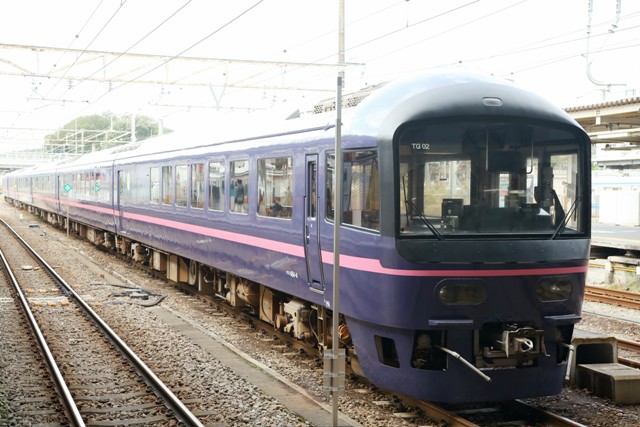Set 407 of the EMU JR West 103 series stands at Kyoto station Official information about JR West local trains (in Japanese): |
Sunday, 29 November 2020
Final Chapter of the EMU 103 Series on the Nara Line
Wednesday, 25 November 2020
Reunion with "Hana", the Flower of Trains
Saturday, 21 November 2020
Origin of Koetsu-gaki Fence in Kyoto City
Tuesday, 17 November 2020
NRA Classic: Afterimage of the Red Arrow Train
Friday, 13 November 2020
The Kanazawa Seaside Line Update: Part 2
Monday, 9 November 2020
The Kanazawa Seaside Line: Update
Thursday, 5 November 2020
Final Chapter of the Old Subway Train
Sunday, 1 November 2020
EMU 70090 Series: Tobu's High-end Commuter Train
On March 20th this year, Tobu Railway launched a brand new train, the EMU 70090 series, on their Isesaki line. Same as the pre-existing 70000 series, the new 70090 series is directly operated onto the Tokyo Metro-Hibiya line.
What's the major difference between the pre-existing 70000 series and the new 70090 series? A simple answer is that the new 70090 series is the high-end version of the pre-existing 70000 series. The 70090 series has multi-purpose seats, which the conductor can change from long seats to cross seats using a remote control system. On the other hand, the 70000 series has simple standard long seats only.
The cross seat mode of the new 70090 series is applied, when it's operated as a reserved seat train, "TH Liner"; while the long seat mode is applied when it's operated as a standard commuter train. This convenient remote control system is similar to those of the Tobu 50090 series, the Keio 5000 series and the Seibu 40000 series.
What's the body design difference between the pre-existing 70000 series and the new 70090 series? They look similar, but their stripes are slightly different. The 70000 series has a red-colored thick stripe on the side body; while the 70090 series has a black-colored one.
Incidentally, the technical specifications of the 70000 and the 70090 are basically the same. One set is composed of 7 motor cars without trailers. The electric control system is the state of the art Si-IGBT VVVF inverter with PMSMs (permanent magnet synchronous induction motors).















